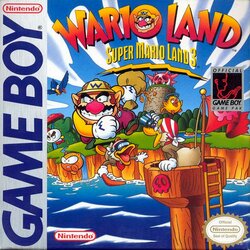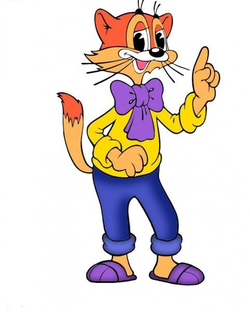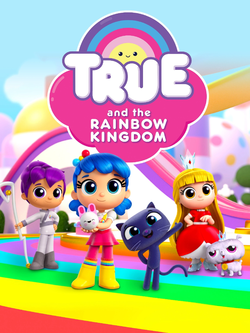Difference between revisions of "User:LiaMinina/Sandbox"
(Removed section (by SublimeText.Mediawiker)) |
(Removed sections, added new section (by SublimeText.Mediawiker)) |
||
| Line 1: | Line 1: | ||
| − | |||
| − | |||
| − | |||
| − | |||
| − | |||
| − | |||
| − | |||
| − | |||
| − | |||
| − | |||
| − | |||
| − | |||
| − | |||
| − | |||
| − | |||
| − | |||
| − | |||
| − | |||
| − | |||
| − | |||
| − | |||
| − | |||
| − | |||
| − | |||
| − | |||
| − | |||
| − | |||
| − | |||
| − | |||
= Fields = | = Fields = | ||
{{Company Infobox | {{Company Infobox | ||
| Line 73: | Line 44: | ||
* [https://www.tv-tokyo.co.jp/anime/rizsta/ TV Tokyo Website] | * [https://www.tv-tokyo.co.jp/anime/rizsta/ TV Tokyo Website] | ||
* [https://www.takaratomy.co.jp/products/rizsta/ Takara Tomy website] | * [https://www.takaratomy.co.jp/products/rizsta/ Takara Tomy website] | ||
| − | |||
| − | |||
| − | |||
| − | |||
| − | |||
| − | |||
| − | |||
| − | |||
| − | |||
| − | |||
| − | |||
| − | |||
| − | |||
| − | |||
| − | |||
| − | |||
| − | |||
| − | |||
| − | |||
| − | |||
| − | |||
| − | |||
| − | |||
| − | |||
| − | |||
| − | |||
| − | |||
| − | |||
| − | |||
| − | |||
| − | |||
| − | |||
| − | |||
| − | |||
| − | |||
| − | |||
| − | |||
| − | |||
| − | |||
| − | |||
| − | |||
| − | |||
| − | |||
| − | |||
| − | |||
| − | |||
= Oropo = | = Oropo = | ||
| Line 286: | Line 211: | ||
* Editors: Kelly Carlson, Tom Berger | * Editors: Kelly Carlson, Tom Berger | ||
* Executive Producers: Bill Schultz, Frank Falcone, Jeremy Larner, Mary Bredin, Pharrell Williams, Robin Frank | * Executive Producers: Bill Schultz, Frank Falcone, Jeremy Larner, Mary Bredin, Pharrell Williams, Robin Frank | ||
| + | |||
| + | = Rabbit (Mario series) = | ||
| + | '''Rabbits''' are a recurring species in the ''[[Mario series|Mario]]'' series of video games developed by [[Nintendo]]. | ||
| + | |||
| + | == Overview == | ||
| + | The first rabbit character appearing in the ''Mario'' series was MIPS from ''Super Mario 64''. If the player captures him, he will release a [[Power Star]]. In the remake of the same game, ''Super Mario 64 DS'' released for the Nintendo DS in 2004, multiple rabbits appear, each of a different color depending on the character the player is controlling (yellow for Yoshi, pink for Mario, green for [[Luigi]], orange for [[Wario]]). When captured, each will give the player a key to unlock a minigame for the Rec Room. There are also eight white "glowing rabbits" that are needed to be caught in order to unlock the white door in Peach's room in Peach's castle, which contains a secret Power Star inside. | ||
| + | |||
| + | === Star Bunnies === | ||
| + | Star Bunnies are a species of rabbit that appears in ''Super Mario Galaxy''. They are present on some levels in different galaxies where the player must find their hiding place in order to obtain a Star. | ||
Latest revision as of 16:03, 25 June 2024
Contents
Fields
| LiaMinina/Sandbox | |
| Company name | Fields Co., Ltd. (株式会社フィールズ) |
| Founded | March 19, 2003 |
| Headquarters | Shibuya Garden Tower (16-17 Nanpeidaicho, Shibuya-ku, Tokyo) |
| Key people | Hidetoshi Yamamoto (Chairman) |
| Website | https://www.fields.biz/products/ps/machine_list.html |
Fields is a Japanese pachinko and pachislot machine manufacturing company.
History
The company was originally known as Toyo Shoji Co., Ltd. (東洋商事株式会社) Its original headquarters where in Minato-ku, Nagoya, in the Aichi Prefecture.
RizSta -Top of Artists!-
RizSta -Top of Artists!- (リズスタ -Top of Artists!-) is a Japanese television series produced by OLM and Takara Tomy.
Synopsis
The legendary top artist, Ryuuji Hoshigami, has created an entertainment stage, the "RizSta Stage".
The performances and dance battles here will be broadcast around the world,
where viewers can use their "RizSta Lights" to send Voltages (cheering energy) directly to the artists.
And so, an exciting dance battle stage of dreams,
where the viewers determine the outcome of the dance battle by sending "Voltages", was born.
However, only those who have a "RizSta Brace" in hand can become a RizSta and stand on the stage.
Ryuuji has created the "RizSta Dance Academy", where new RizSta are being raised.
There, young people from all over the country aim to be top artists,
but a strict entrance exam awaits them.
Miu, Rion, and Shota, with all their passionate feelings in mind, aim to become RizSta.
But can they hone their personal skills, compete in dance battles,
work hard and overcome tough challenges in order to seize their dream of becoming the top artist!?
This is the story of the growth of children,
who chase after their dream with all their might...!
Official links
Oropo
Introduction
Oropo is part of the Eliotropes, a race created in the moment Yugo used the power of the six Eliatrope Dofus (the Dofus of his siblings and their dragons) to confront Ogrest. When Yugo tapped into the power of the Dofus, he scattered fragments of himself into time and space, creating the Eliotropes and sending them to the Age of the Dofus, a thousand years back.
As each Eliotrope perished, the life of the surviving others was made longer, which was the reason why it took centuries for Oropo to become an adult.
World of Twelve
The World of Twelve is one of the numerous planets in the Krosmoz.
After a long journey, the Eliatropes arrived on the planet aboard their vessel, the Zinit, and established a colony here. But Orgonax and the Mechasms had found them, because of Qilby intentionally sending them a signal. Thus, a second battle against them was held, in which the adult Eliatropes used up all their power to open a portal to another dimension, sending their children there to safety. Nora, a member of the Council, made a desperate plea to the Goddess Eliatrope, and using her power, she defeated Orgonax, causing an explosion that wiped out all life on the planet.
Several millennia later, the god Osamodas arrived at the desolated planet, and decided to breathe life into it. The other nine Gods soon followed.
The gods then saw that there had to be balance in this world, so they decided to create powerful artifacts to ensure this balance. The god Sadida created dolls to seduce Osamodas' dragons, making them lay Dofus. The resulting six Dofus, each representing an element (Fire, Water, Earth, Air, Wakfu and Stasis) were placed on the care of guardians.
According to the pulsations of these six Dofus, the god Xelor created a giant clock with which to calculate time. This was called Xelor's Clock, and the year in which the clock was created and started to function was considered "Year 0".
Wario Land: Super Mario Land 3
| LiaMinina/Sandbox | |
 | |
| Original Name | スーパーマリオランド3 ワリオランド |
| Official Translation Name | Wario Land: Super Mario Land 3 |
| Platform | Game Boy |
| Rating | E |
| Developed by | Nintendo R&D1 |
| Published by | Nintendo |
| Designed by | Hiroji Kiyotake |
| Music by | Ryoji Yoshitomi Kozue Ishikawa |
| Mode | Single-player |
| Series | Wario series |
Wario Land: Super Mario Land 3 is a Game Boy game developed by Nintendo, released in 1994. It is the third installment of the Super Mario Land series.
Synopsis
The game's protagonist is Wario, formerly the villain of Super Mario Land 2: 6 Golden Coins.
After Mario took back his castle from him in the previous game, Wario decides he wants a castle of his own. He hears of the Brown Sugar Pirates, who have stolen a grand quantity of coins and treasures, including a golden statue of Princess Peach, and hid them in Kitchen Island.
Santa Monica Studio
| LiaMinina/Sandbox | |
| Type | Video game developer |
| Founded | 1999 |
| Main works | God of War |
| Related Companies | Sony Interactive Entertainment |
| Website | https://sms.playstation.com |
Santa Monica Studio is an American video game developer.
History
The studio was founded in 1999 and spun off from Sony Interactive Entertainment. Like its name implied, the studio had its main offices in Santa Monica, California, they later moved to Playa Vista in 2014.
Works
- God of War series
- Twisted Metal series
Leopold the Cat
Leopold the Cat is a Russian cartoon character created by Studio Ekran in 1975. He is the protagonist of the Leopold the Cat series of animated short films. There were eleven Leopold films produced in total, from 1975 to 1987.
Overview
Leopold is a kind, orange cat who wears a bowtie. He often has to deal with the mischief of the two mice, Grey and White.
List of Leopold films
- The Revenge of Leopold the Cat / Месть кота Леопольда (1975)
- Leopold and the Goldfish / Леопольд и золотая рыбка (1975)
- The Treasure of Leopold the Cat / Клад кота Леопольда (1981)
- Leopold the Cat's TV /Телевизор кота Леопольда (1981)
- Leopold the Cat Goes for a Walk / Прогулка кота Леопольда (1981)
- Leopold the Cat's Birthday / День рождения кота Леопольда (1982)
- Interview with Leopold the Cat / Интервью с котом Лепольдом (1984)
- Leopold the Cat in Dreams and Reality / Кот Леопольд во сне и наяву (1984)
- Leopold the Cat's Polyclinic / Поликлиника кота Леопольда (1986)
- Leopold the Cat's Automobile / Автомобиль кота Леопольда (1987)
Derivative works
Animation
| The New Adventures of Leopold the Cat | |
| Original Name | Новые приключения кота Леопольда |
| Translation Name | Cat Leo |
| Region | Russia Italy |
| Original run | January 2016 |
| Episodes | 13 |
| Studio | Mondo TV Russian Mobile Television |
| Directed by | Anatoly Reznikov Orlando Corradi |
| Written by | Anatoly Reznikov Faibo di Ranno |
| Music by | John Sposito |
| Voiced by | Alexander Kalyagin Andrey Barkhudarov Diomid Vinogradov |
True and the Rainbow Kingdom
True and the Rainbow Kingdom is an American animated series created by Guru Studio, it premiered on Netflix on August 11, 2017.
Synopsis
True is a young girl who lives in the Rainbow Kingdom with her cat Bartleby. By tapping into the powers of the Wishes, she helps the inhabitants of the kingdom.
Cast
- True: Michaela Luci
- Bartleby: Tom Kenny
- Grizelda: Anna Claire Bartlam
- Zee: Nicolas Aqui
- Rainbow King: Eric Peterson
- Frookie: Sam Marin
- Bingo Bango: Brandon McGibbon
- Rocky, Wishing Tree: JG Quintel
- Silverclaw: Patrick Warburton
- Shadow: Stephany Seki
Staff
- Creative Directors: Brandon James Scott, Yurie Rocha
- Creators: Ralph Fulton, Arturo Sandoval III, Samuel Borkson
- Directors: Harold Harris, Jamie Whitney
- Editors: Kelly Carlson, Tom Berger
- Executive Producers: Bill Schultz, Frank Falcone, Jeremy Larner, Mary Bredin, Pharrell Williams, Robin Frank
Rabbit (Mario series)
Rabbits are a recurring species in the Mario series of video games developed by Nintendo.
Overview
The first rabbit character appearing in the Mario series was MIPS from Super Mario 64. If the player captures him, he will release a Power Star. In the remake of the same game, Super Mario 64 DS released for the Nintendo DS in 2004, multiple rabbits appear, each of a different color depending on the character the player is controlling (yellow for Yoshi, pink for Mario, green for Luigi, orange for Wario). When captured, each will give the player a key to unlock a minigame for the Rec Room. There are also eight white "glowing rabbits" that are needed to be caught in order to unlock the white door in Peach's room in Peach's castle, which contains a secret Power Star inside.
Star Bunnies
Star Bunnies are a species of rabbit that appears in Super Mario Galaxy. They are present on some levels in different galaxies where the player must find their hiding place in order to obtain a Star.

